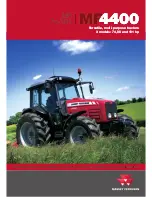
Table 37.1 Continued
Materials and components
Degrees
C
F
a On the surface of an insulated coil where the temperature is affected by an external source of heat, the temperature rise
measured by a thermocouple may be higher than the specified maximum, if the temperature rise of the coil, as measured by
the resistance method, is not more than that specified in the table. The additional acceptable temperature rises above the
values specified are:
Item
Temperature
Part A of items 6 and 7
5°C
(9°F)
8
20°C
(36°F)
12
15°C
(27°F)
Part A of items 13 and 14
10°C
(18°F)
See 37.6.
b See noteb to Table 22.2.
c The limitations on phenolic composition and on rubber and thermoplastic insulation do not apply to compounds that have
been investigated and found to be acceptable for a higher temperature.
d Rubber-insulated conductors within a Class 105 (A) insulated motor and rubber-insulated motor leads, may be subjected to a
temperature rise of more than 35°C (63°F), provided that an acceptable braid is employed on the conductors. However, this
does not apply to thermoplastic-insulated wires or cords.
e A short length of rubber- or thermoplastic-insulated flexible cord exposed to a temperature of more than 60°C (140°F), such
as at terminals, is acceptable if supplementary heat-resistant insulation of adequate dielectric strength is employed on the
individual conductors of the cord to protect the appliance against deterioration of the conductor insulation.
f For an electrolytic capacitor that is physically integral with or attached to a motor, the temperature rise on insulating material
integral with the capacitor enclosure may be not more than 65°C (117°F).
g A capacitor that operates at a temperature rise of more than 65°C (117°F) may be judged on the basis of its marked
temperature limit.
h The maximum sealing compound temperature when corrected to a 25°C (77°F) ambient temperature, is 15°C (27°F) less than
the softening point of the compound as determined by the Test Method for Softening Point by Ring-and-Ball Apparatus, ASTM
E28-67(1982).
37.6 A thermocouple is to be used to determine the temperature of a coil or winding if it can be mounted,
without removal of encapsulating compound or the like, on the integrally applied insulation of a coil without
a wrap, or on the outer surface of a wrap that is not more than 1/32 inch (0.8 mm) thick and consists of
cotton, paper, rayon, or the like, but not of asbestos or similar thermal insulation. The
change-of-resistance method is to be used if the thermocouple measurement cannot be conducted in
accordance with the foregoing considerations. For a thermocouple-measured temperature of a coil as
mentioned in items 6, 7, 8, 12, 13, and 14 of Table 37.1, the thermocouple is to be mounted on the
integrally applied insulation on the conductor.
FEBRUARY 1, 1996
HOUSEHOLD TRASH COMPACTORS - UL 1086
42
Содержание UL 1086
Страница 1: ...UL 1086 ISBN 1 55989 928 X Household Trash Compactors ...
Страница 2: ......
Страница 6: ...JANUARY 6 2004 UL 1086 tr4 No Text on This Page ...
Страница 8: ...JANUARY 6 2004 HOUSEHOLD TRASH COMPACTORS UL 1086 2 No Text on This Page ...
Страница 11: ...DECEMBER 1 1999 HOUSEHOLD TRASH COMPACTORS UL 1086 3 No Text on This Page ...
Страница 20: ...DECEMBER 17 1998 HOUSEHOLD TRASH COMPACTORS UL 1086 10B No Text on This Page ...
Страница 32: ...JANUARY 6 2004 HOUSEHOLD TRASH COMPACTORS UL 1086 18B No Text on This Page ...
Страница 36: ...DECEMBER 1 1999 HOUSEHOLD TRASH COMPACTORS UL 1086 20B No Text on This Page ...
Страница 40: ...JANUARY 6 2004 HOUSEHOLD TRASH COMPACTORS UL 1086 22B No Text on This Page ...
Страница 58: ...JANUARY 6 2004 HOUSEHOLD TRASH COMPACTORS UL 1086 38B No Text on This Page ...
Страница 70: ...DECEMBER 1 1999 HOUSEHOLD TRASH COMPACTORS UL 1086 48B No Text on This Page ...
Страница 76: ...JANUARY 6 2004 HOUSEHOLD TRASH COMPACTORS UL 1086 52B No Text on This Page ...
Страница 82: ...JANUARY 6 2004 HOUSEHOLD TRASH COMPACTORS UL 1086 A2 No Text on This Page ...
















































